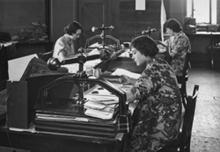Plant mounting
Felipe Dominguez-Santana, who works as a herbarium technician at the Natural History Museum, talks us through the process of plant mounting in this video.
There are over 6 million plant specimens in the Museum’s collections. New ones are added all the time as scientists bring back plants from their travels around the world.
Collecting is only the beginning. Before a plant can be added to the collections it has to go through a number of stages, including being frozen, dried and mounted.
The freezing process
Each plant specimen goes through a 1-week freezing cycle. Once in the freezer, the temperature is taken down to a chilly minus 30°C and held there for 3 days. It is then raised slowly back to normal temperature. This process kills pests and their eggs without damaging the specimens themselves.
The drying process
Before a plant is dried, morphological (body structure) measurements are taken and a leaf is removed for further study.
To dry the plant, it is placed on blotting paper, pressed and placed in a drying room for between 2 days and 2 weeks, then it is mounted.
The mounting process
The dried plants are glued to acid-free paper, which has very few impurities. The paper is made from conservation-grade material so that it won't degrade.
All herbarium sheets have a label on the bottom right-hand corner, which is a record of what the specimen is, where and when it was collected, and by whom. Each sheet also has a capsule containing a flower, a leaf and a seed from the plant, so that they can be studied under a microscope or used in DNA analysis.
Mounting old specimens
As well as mounting new specimens, Felipe also spends a lot of time re-mounting and mounting old specimens from the collections.
The old labels are cut from the original sheet and information from the back of the label, such as which herbarium the specimen previously belonged to, is taken. Often, an older specimen will have more than one label if new discoveries are made, for example, it may not be the species scientists thought it was.
Felipe always uses gloves when handling older specimens. Today, pests are killed by placing all new specimens in the freezer, but historically the plants were poisoned with mercury, so need to be handled carefully.

Plant mounters at the Museum, 1934
The history of plant mounting
The presses used in the plant mounting process are very old, and are the same ones used when the Museum opened in the 1880s. This method of mounting is still the best today.
In this picture you can see three out of the six plant mounters employed in the Botany Department in 1934. Although there were very few women on the permanent staff in the 1930s, a large number were employed as 'unofficial workers'.